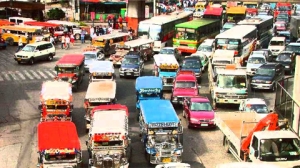
Manila Traffic
(Photo courtesy of http://www.remate.ph)
Before I go further, I wish to state that there is nothing wrong in pointing out differences especially ones that cause much confusion between people from different cultures and with different attitudes.
Filipinos sometimes wonder what on earth we, funny foreigners, are complaining about. Well, complaining is futile here anyway, so let’s say that this is just to give a people who come from places where it’s very different (outsiders) an idea of just how different it is here. Be mentally and emotionally prepared. It’s never fully explainable, but as you grow more used to it, you begin to understand it and the keyword is accept; things are done differently around here.
I, like many, would sometimes get frustrated at many things about some of the ways here. It’s different where we come from, I’m not saying better, just different. Adaption can only come when you understand it and that takes time.
In your early moments here, you are going to have a weakened heart from the stresses, but improved lungs from all the sharp intakes of breath you will need to be taking. Yes, patience is a must here. Prepare yourself for some rather perplexing and sometimes annoying behaviour and breathe deeply. It helps if you try to work out some reasons why things are as they are.
Contrasting ways
We, foreigners, or most of us at least, come from a climate of waiting for your turn in a queue and giving a little ground when in motion so we don’t collide, usually it’s self-administered. The lack of cooperation is difficult to understand when first faced with it here.
Here the traffic jams are sometimes caused by blocking maneuvers of motorists, which gridlock the main roads that in turn affects the side roads, and much of it is caused by everyone trying to gain a one meter advantage but only succeed in slowing everything down including themselves. Even though they know they are blocking access, the one meter of room they may have to give to let another vehicle through is something they are not prepared to give. In fact, their actions multiplied by everyone else’s actions end up always in a jam. I’m not saying all traffic jams are caused by this attitude, but it is definitely a major contributing factor to the gridlock.
If you look at it practically, it’s simply funny, and I think that’s the best way to go through your days here, smiling and acceptive, even when your toes are trodden on. You are going to have days before you get used to it here when you will be convinced you will never adapt. Thing is though, you do just as soon as you accept it and stop trying to change it. Trying to change it would simply be pointless.
Try not to see it like that and just remember that the Filipino was built with a faulty radar system and that’s it. Don’t get mad; don’t start blowing off with, “Watch where you’re going, you idiot!” or “Why are you blocking the possibility of me turning by blocking the access even though you’re in stationary traffic?!” Just keep remembering, it’s never been any different here and that little engineering fault many have, faulty radars.
If you’re ever foolish enough to drive, you had better develop the same mentality. If you drive here like you do at home, with courtesy, then you will possibly move 70 meters in a day.
Same applies when walking around. Many Filipinos in Metro Manila have no built-in radar whatsoever. A walk through a market, street or even mall is somewhat bewildering.
Now, we all know that when someone is walking forward and someone is approaching from the side that normally you just hold back half- a step to avoid a collision, if that person is fractionally ahead of you. It’s instinctive, or so I thought. Here in the Philippines, that is the part of a Filipino which sometimes malfunctions and collide, you probably will. Yet strangely, they don’t actually collide as much as you expect, it’s like they are so used to it, it’s become a skill. Collisions are inevitable when people give no quarter, but when it happens; they don’t get mad, just used to it.
Yes, we are talking on foot here but the same applies with traffic. It makes no odds if you’re a huge bus or a tricycle, the radar just isn’t working. So both are going through and nothing is going to stop them. That sometimes appears to be the thinking sometimes.
Few will say sorry when they walk into you, as it’s just something normal. The radars are faulty so we will collide so what’s to say sorry for.
As much as you take it in your stride, when it comes to the larger vehicles, it can be a very UN-funny feature of the Filipino. The standards of driving are about what you would expect after someone was taught to drive steering a carabao, and then given the keys to a car. Even worse, a bus or jeepney as the crazy antics of motorists here are just unbelievable!
Painting lines on the road is a total waste of money. I actually believe that some just think they are a cool road design and they have no idea why they are there. “Why have 3 lanes when you can have 7?!” also seems to be part of the thinking. What they haven’t worked out is that half the traffic chaos is simply caused by insane driving, trying to get ahead and leading to blocking. There is little to no guidance from authority as to how to drive in a cooperative manner; they simply don’t know any other way, they have never been shown.
The traffic weaves in and out from one lane to the other, and if you leave any gap, someone will take the space. They drive giving no quarter, won’t let you in or out if you need to change lane unless you force the issue, forget courtesy; you won’t often see that when driving around the capital although it does happen on occasion.
If you need to change lane in tight traffic, you would have to do it in a way that would suggest to others that if they won’t back down, you are going to exchange paintwork; as if you don’t, nobody will let you across. They simply don’t look at you and keep filling the space. This is a feature of rush hour traffic, a time when I wonder why anyone would want to travel in a car. Naturally, may be a little easier between 9AM and 3PM, the window hours between the number coding restriction rule.
If you don’t want to lose your cool and spend the rest of your days in a Filipino jail for a road rage murder, then don’t try and drive. Even bungee jumpers would think twice. It’s too slow to be dangerous in many places but it’s mental. Higher speed driving is another thing again. When on an open road, you will notice some insanely dangerous overtaking maneuvers. A heavy truck is hurtling towards them in the opposite direction but no matter. They overtake and it’s just an act of God that they don’t collide every time. They make frightening judgments as regards risk and just overtake regardless of what’s coming in the opposite direction.
If traffic is blocked going on one direction only, then many will simply go over to the lane for oncoming traffic and try to pass but as many do it, that means the oncoming traffic is blocked too by vehicles going the opposite way. It’s selfishness at its most extreme and none benefit for it but they will never stop and authority seems to be not dealing with it. They are used to it, too so doubt that they even recognize the problem; it’s self-created chaos.
Disable your radar
If you’re here for the long-term, then spend a long time working out how they do things on the road before you buy a car. You just might not want to use it.
In crowds, again the lack of radar will mean you will be on constant collision course with others. Now the question is, can you get used to this quickly and simply disable your own built-in radar system? That’s possibly the best way to counteract it, even though you don’t feel comfortable doing it.
Now what happens after you have been here a long time? You find yourself behaving more and more like many locals do. It’s simply a matter of do it or don’t ever get home. Nobody is going to sweetly hold back and let you through, at least not in rush hour or in the most crowded places such as market or busy street when you’re walking.
Other things not radar-related are such as when awaiting to be served at a busy store, people will just come up and shout out what they wanted disregarding you were there first. How do you prevent it? You don’t. So you simply have to do the same.
As I’ve said far too often already in earlier articles, much of this is due to overcrowding and living in a city of faceless people who are simply trying to move forward quicker than anyone else. You are going to have to adapt, stay cool, and lose some of your inbuilt manners.
This is Metro Manila or at least much of it. In these situations, these people don’t seem right at all and it has you seriously asking yourself, will you ever get used to it.
To a people who haven’t seen it any other way, it’s not such a problem as it is to us. We’re not used to it; it’s against what we were taught. Simple moral is re-learning everything you know; this is Metro Manila.
After a while watching how locals manage is possibly your best tip. I spent months possibly a year or 2 really useless at crossing roads here. They come at you from all directions and it’s scary. Then I noticed that in a strange kind of way, they are not always as inconsiderate as I thought. Simply step out gently, hold up your hand, they slow down to let you cross. The etiquette is there; it’s just nothing like how we do it. Observation is the key. Locals don’t get mowed down or not often at least. Do the same, it works. You have to simply announce you’re stepping out with a raised hand; they don’t actually kill you, I even get smiled at often by the one I’ve stepped in front of.
It’s a collection of cities with 12 million people in it. It works for them. I know it’s not easy to change the way you have done things all your life, but simply disable your radar and go. Our nice little ways work fine in our less hectic spaces in our home countries. It doesn’t apply here.
I believe people are aware of the negative impact of their radar-less ways. In quieter situations, it’s less apparent. Be risqué and the biggest lesson to learn from locals is don’t get mad, stay cool and you find your patience emerges. Before you know it, you will be off the Valium.
So I hope this advice makes sense as you start out in the capital. It will take a lot longer than a month’s vacation here to adapt, but you will. Switch off your radar, and just collide and smile. Patience is something I’ve learnt from the Filipino. They don’t get mad; why should we?




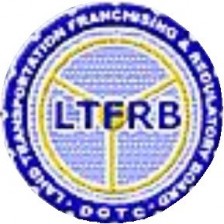
 The most convenient method of travel around Metro Manila is by taxi. They are cheap and there are certainly plenty of them. Let it also be said that most are usually quite decent and fair and do as they should by putting the meter on before they drive off with you on board. They also take you to your destination via the shortest route, are polite and I cannot say enough good to credit these guys.
The most convenient method of travel around Metro Manila is by taxi. They are cheap and there are certainly plenty of them. Let it also be said that most are usually quite decent and fair and do as they should by putting the meter on before they drive off with you on board. They also take you to your destination via the shortest route, are polite and I cannot say enough good to credit these guys.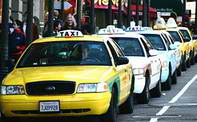 I stand by my comments regarding most taxi drivers being not so bad and we should not forget that. But again, we are in territory where certain things have to be said. Some Metro Manila taxi drivers are totally beyond the limit. It also seems that little is being done about it.
I stand by my comments regarding most taxi drivers being not so bad and we should not forget that. But again, we are in territory where certain things have to be said. Some Metro Manila taxi drivers are totally beyond the limit. It also seems that little is being done about it. 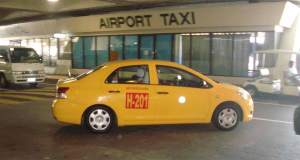 On a bad day, you may encounter 3 or 4 of these before you find one that actually is aware that he is a taxi driver and they are supposed to drive wherever you want to go. They operate as if it is for their convenience and not yours. Take a deep breath and just let him go.
On a bad day, you may encounter 3 or 4 of these before you find one that actually is aware that he is a taxi driver and they are supposed to drive wherever you want to go. They operate as if it is for their convenience and not yours. Take a deep breath and just let him go.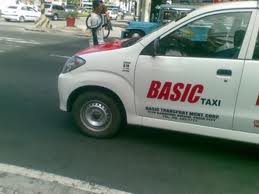 On rare occasions, you may find yourself subjected to a little magic. This is the name given to a little device that some taxis have which manually moves the meter by clicking a little handheld button. This is something they are more likely to use on a foreigner in the belief you are not aware of the rate that the meter clicks up a few pesos. Every time they click the button, the meter increases.
On rare occasions, you may find yourself subjected to a little magic. This is the name given to a little device that some taxis have which manually moves the meter by clicking a little handheld button. This is something they are more likely to use on a foreigner in the belief you are not aware of the rate that the meter clicks up a few pesos. Every time they click the button, the meter increases.











